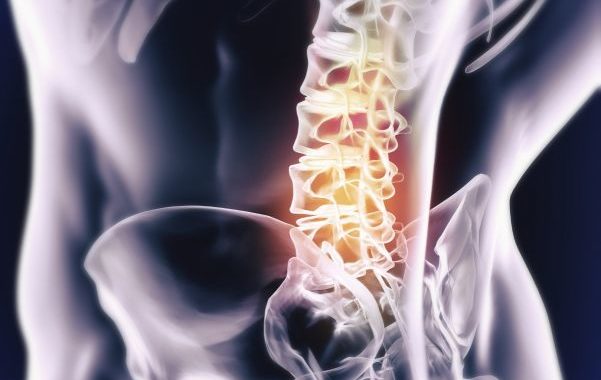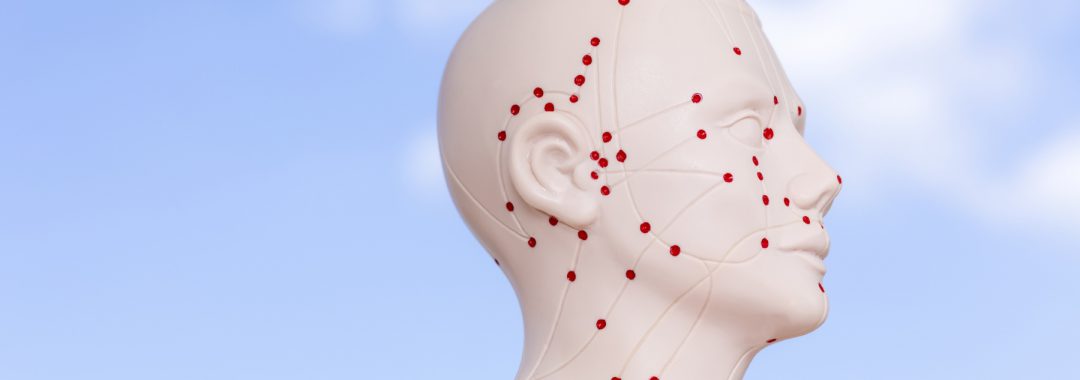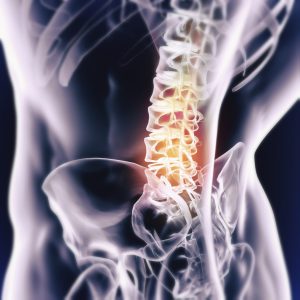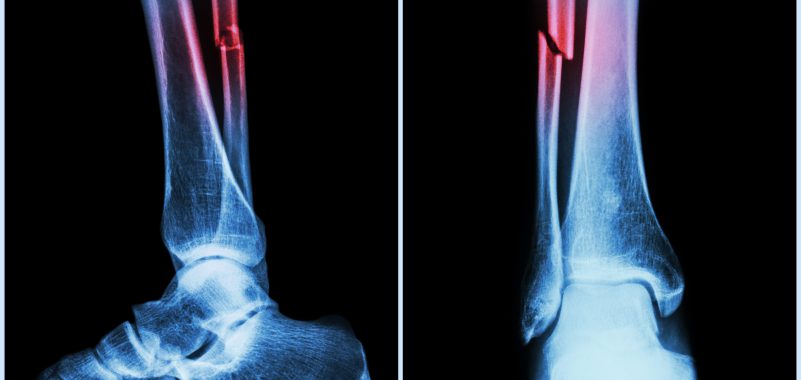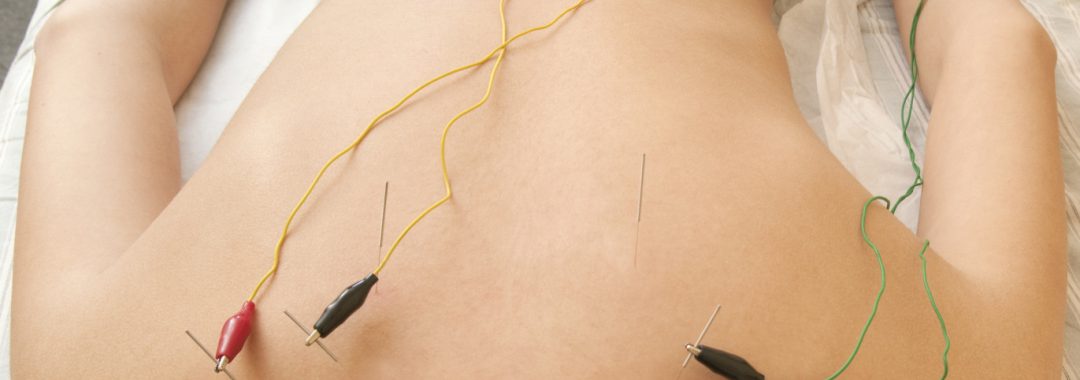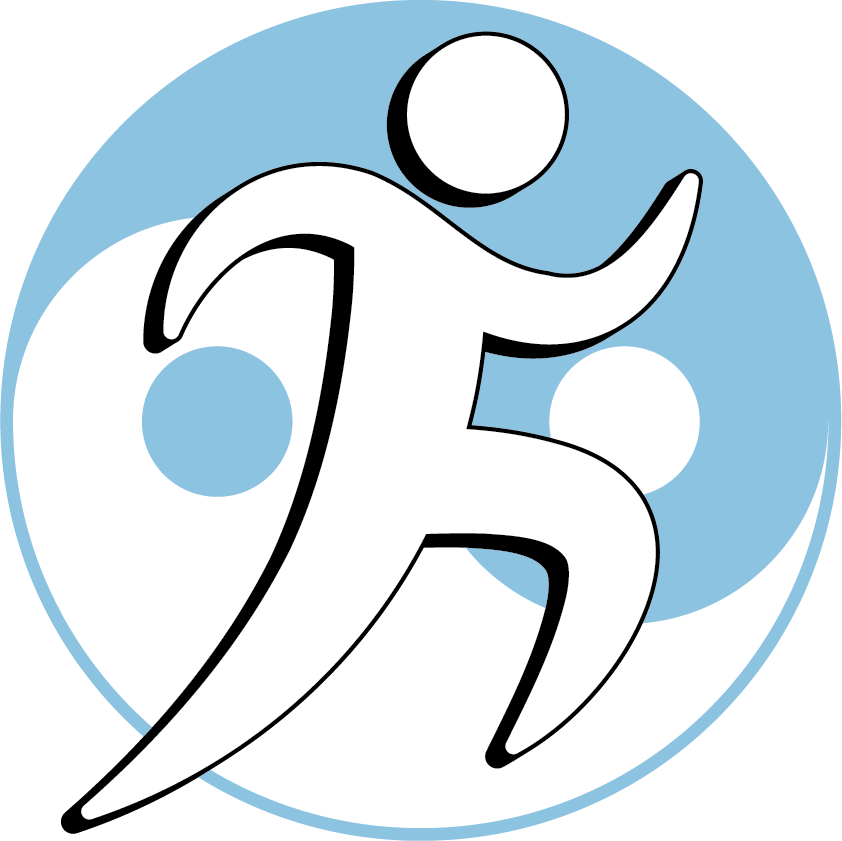Open to access this content
Category Archives: AOM Class Offerings
Documentation and Report-Writing
With Instructor Anthony Von der Muhll, L.Ac., DAOM, DNBAO, FAIPM
Medical Documentation: Essential Best Practices
Live Webinar Workshop & Distance-Learning Course
Professional medical documentation skills are vital for:
- Improving outcomes and learning directly from your patient cases
- Building referral relationships and improving coordination of care with other medical professionals
- Supporting insurance reimbursement
- Complying with records requests and surviving insurance audits
- Defense in case of malpractice suits and complaints to regulatory agencies
Class Topics:
- Bring your charting up to the highest standards of professionalism by reviewing and applying best practices in:
- Organization and completeness
- Appropriate use of medical terminology
- Documenting case management and safety procedures
- Techniques to save time and effort while improving quality
- Pros and cons of templates, checklists, and narratives: avoiding the appearance of "rote" treatment
- Custodianship and transfer of patient records: keeping it safe and legal
- Further learning: developing charting skills for your areas of specialization
Class notes feature sample initial (History of Present Illness) and progress (SOAP) notes.
Billing managed care insurance? Our Report-Writing Workshop for Managed Care class can help with treatment authorization and reimbursement. Register for both classes for -10% off each.
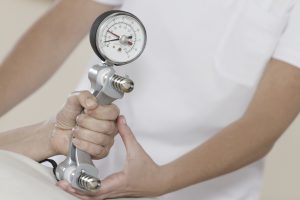
Report-Writing for Managed Care: HMO, Personal Injury & Work Comp
Live Webinar Workshop & Distance-Learning Course
-- "Thanks a lot for providing the class to us; very professional and useful, helpful!" -- Shaoying Bai, LAc., Sacramento CA
Report-writing skills are vital for treatment authorization and reimbursement for HMO, Personal Injury and Work Comp cases.
Class Topics:
- Documentation and reporting of subjective and objective measurements of functional capacities and other key baselines, including:
- Standard, research-validated questionnaires to measure patient self-assessments of functional capacity
- Pain scales: how to use them accurately and reliably
- Findings from observation and inspection
- Joint range-of-motion
- Strength, sensory function, and tenderness scales
- Measuring limb girth and skin lesions
- Special tests and physical examinations
- Non-quantifiable assessments of functional capacity
- Setting appropriate treatment goals
- Presenting outcomes and making recommendations for future care to support reimbursement and treatment authorization/re-authorization requests
Class notes include sample initial functional capacity evaluations and re-evaluation reports for managed care insurance.
Live webinar workshops feature instructor-lead peer review/feedback regarding student chart notes and reports.
Student Ratings and Comments
from evaluation from prior live class offering in 2016, as required by California Acupuncture Board
Respondents: 13 of 17 enrolled
Average rating: 99/100
- “Anthony as always is superbly professional, knowledgeable, and encouraging improvements in clinical practice. Thank you!” --Anonymous
- “All of your classes have been instrumental in my ability to improve patient care–but it could be a 2-day course to cover more. Thank you!” –Jennifer Root, L.Ac.
- “I always enjoy Anthony’s classes, very helpful info.” --Anonymous
For Certification in Acupuncture Orthopedics, either the live webinar (8 hours), or the distance-learning class (5 hours) + one live 3-hour Case Consultation meeting focused on medical documentation is required.
View full certification program and register for in-person, live webinar and self-paced distance-learning classes.
California Scope of Practice Laws: Clarifying the Gray Areas — Distance-Learning Course
Open to access this content
California Scope of Practice Laws: Clarifying the Gray Areas — Live Webinar
Open to access this content
Treating the Low Back, Neck and Shoulder with Classical and Modern Acupuncture
Hands-on training and practice with Anthony Von der Muhll, LAc, DAOM
September 21, 2024, York, United Kingdom
September 28-29, 2024, Basel, Switzerland
Advanced Clinical Approaches: Low Back, Core & Pelvic Girdle
Saturday, September 21, 2024, 10:00-17:00
In-person only at the Northern College of Acupuncture, York, UK
Register through the Northern College of Acupuncture
NCCAOM PDAs approved
Comments from class evaluations:
"Great class and great series! So much information that’s immediately useful." -- Eunhye Kim
Treating the Low Back with Classical and Modern Acupuncture
Saturday, September 28, 2024, 9:00-17:00
In-person only at aava Zentrum für EEH und Eltern-Kind-Begleitung, Leonhardsberg 14, Basel, Switzerland
Treating the Neck and Shoulder with Classical and Modern Acupuncture
Sunday, September 29, 2024, 9:00-17:00
In-person only at aava Zentrum für EEH und Eltern-Kind-Begleitung, Leonhardsberg 14, Basel, Switzerland
TCM Fachverband members: contact TCM Fachverband for discount code for 10% off.
Clinical anatomy, kinesiology, and the jing-jin ("sinew meridians" or myofascial tracts)
- Bones, muscles, discs and facet joints, and neurology
- Posture and motion dysfunctions
- The arthritic progression: strain/sprain, derangement, degeneration
History-taking: key diagnostic questions
- "Red flag" symptoms of urgent/serious medical conditions potentially warranting referral to physician care: stenosis, tumors, infection, fractures, and neuropathies
- Identifying the affected jing-jin ("sinew meridians" or myofascial tracts).
- Differentiating symptoms of muscles, joint, disc, spinal cord, and nerve root injuries
- Neural hypersensitization and psycho-social factors
Physical exam of the low back, neck and shoulder: how findings can guide acupuncture treatment
- Classical jing-jin and modern orthopedic observation, inspection and palpation
- Joint exam: active range-of-motion and passive stress testing of the spinal and shoulder joints
- Examination for upper and lower motor neuron lesions: deep tendon, and pathologic reflexes and sensory, and motor function
- Manual strength testing and referred pain pattern charts for 35 key muscles of the low back, core and pelvic girdle, neck and shoulder
- Special orthopedic tests for the back, neck and shoulder
- Clinical flow charts to facilitate efficiency and accuracy in examination
Diagnosis and pattern identification
- Jing-jin syndromes
- Postural and motion dysfunctions
- Muscle strains and myofascial pain
- Radiculopathies and stenosis
- Chronic back, neck and shoulder pain, spondylosis, arthritis, degenerative disc disease, scoliosis
- Spinal spondylolistheses
- Failed spinal surgery syndromes
- For the low back: post-partum pain, insufficiency of the iliolumbar and sacrotuberous ligaments, and dysfunctions of the sacroiliac joint
- For the neck and shoulder: cervical facet, glenohumeral and acromioclavicular joint pain
Treatment of the jing-jin and orthopedic conditions
- Myofasicial trigger point needling.
- Low back: quadratus lumborum, iliopsoas, gluteals, hip external rotators, and abdominals.
- Neck: upper trapezius, levator scapula, scalenes, sternocliedomastoid.
- Joint & ligament acupuncture.
- Low back: iliolumbar, posterior sacro-iliac, and sacro-tuberous ligaments.
- Neck: spondylolistheses and facets. Shoulder: glenohumeral and acromioclavicular joints
- Active cupping. Suction + movement to improve spinal range-of-motion and joint biomechanics.
- Gua sha and tui na. Manual myofascial and joint mobilization.
- Electroacupuncture. For radiculopathies and spinal cord compression and injuries.
- 3-edged, lancet and 7-star needle therapies. Moving and draining blood stagnation to reduce pain and restore flexibility.
For facility information only, contact:
078 926 00 94*
info@aavabasel.ch
Essential Orthopedic Acupuncture Techniques and Modalities — Distance-Learning Course
Open to access this content
Acupuncture Orthopedics Webinars – Login Instructions — NCA
Please use the Zoom meeting link below to join the webinar:
Time: Jul 23, 2024 07:00 PM Greenwich Mean Time
https://us06web.zoom.us/j/85823172225?pwd=p0ZcTUQMb5nIOb4XP8Q251bXEOvHEd.1
Meeting ID: 858 2317 2225
Passcode: 319534
Please note that this webinar is being broadcast through the Northern College of Acupuncture, York UK
Basics of Calf, Ankle, Foot — Distance-Learning Course
Open to access this content
Head, Neck & Thorax
In-Person Classes & Live Webinars
Must be attended at the time/date offered for Live PDAs/CEUs
See below for detailed description of class contents
Head, Neck & Thorax: Anatomy Lab for Acupuncturists
with Jamie Bender
Friday, July 11, 2025, 9:00-6:00
at the Academy of Chinese Culture and Health Sciences, 1600 Broadway, Oakland CA
Head, Neck & Thorax: History, Examination, Assessment & Treatment
Saturday-Sunday, July 12-13, 2025, 9:00-6:00
at the Academy of Chinese Culture and Health Sciences, 1600 Broadway, Oakland CA
Head, Neck & Thorax: Review & Practicum Lab
with Anthony Von der Muhll
Prerequisite: completion of our 16-hour Head, Neck & Thorax: History, Exam, Assessment & Treatment course (in-person or distance-learning)
Monday, July 14, 2025, 8:30-5:30at the Academy of Chinese Culture and Health Sciences, 1600 Broadway, Oakland CA
Self-Paced Distance Learning
1-year on-demand access
See below for detailed description of class contents
Head, Neck, Thorax: History, Examination, Assessment, & Treatment
Self-Paced Distance-Learning Module
with Anthony Von der Muhll
Contact us to request CAB CEUs
Comments from Course Evaluations
"This class was amazing and so packed with information. I am going to have to listen to the recording over and over in order to be able write down all that was said. I can't wait to be able to take an in person course." -- Shelby Smith, L.Ac., Olympia, Washington
"This class has been incredibly enriching and full of valuable information. I truly enjoyed every session and felt fully engaged throughout. The depth of knowledge shared, especially regarding assessment techniques and the integration of orthopedic tools, has greatly expanded my understanding of clinical applications in acupuncture. I feel more confident in my ability to evaluate and treat complex cases, and I’m excited to apply what I’ve learned in my practice. This has definitely been one of the most informative and inspiring courses I’ve taken!" -- Karla Colmenarz, L.Ac., Chevy Chase, Maryland
Clinical anatomy, kinesiology, and the jing-jin ("sinew meridians" or myofascial tracts)
- Bones, muscles, discs and facet joints, and neurology
- Posture and motion dysfunctions
- The arthritic progression: strain/sprain, derangement, degeneration
History-taking for head, neck, thorax: key diagnostic questions
- "Red flag" symptoms of urgent/serious medical conditions warranting referral to physician care
- Differentiating symptoms of muscles, joint, disc, and spinal cord, plexus and nerve root injuries
- Neural hypersensitization and psycho-social factors
- Functional capacity questionnaires for reporting to managed care insurance
Physical exam of the head, neck, thorax: key procedures
- Observation, inspection and palpation
- Joint exam: active range-of-motion, stability, and tracking assessment of the cervical and thoracic spine and TM joint
- Neurologic exam: upper motor neuron; arm reflex, sensory, and motor function; and brachial plexopathies
- Special orthopedic tests for the spine and ribcage
- Documentation of physical exam findings
- Measuring and reporting functional capacity baselines and treatment outcomes
Diagnosis and pattern identification
- Cervicogenic and tension-type headaches
- Temperomandibular joint pain and dysfunction
- Cervical and thoracic sprains/strains and chronic myofascial pain
- Cervical and thoracic disc and facet joint injuries: dysfunction, derangement, degeneration
- Nerve root and spinal cord injuries
- Intercostal sprains/strains
- Brachial plexopathies and thoracic outlet syndrome
- Myofascial trigger points and referred pain patterns for over 17 muscles of the head, face, neck and thorax
Treatment of head, neck, and thorax pain and injuries
- When and how to use distant and local needling for rapid and lasting pain relief
- Electroacupuncture for neural blockade and rehabilitation
- Releasing muscle tension through myofascial trigger point needling
- Prolo-acupuncture for spinal and TM joint stabilization and mobilization
- Using 7-star, 3-edged and lancet needles to reduce inflammation and ischemic pain
- Manual therapy: gua sha, tui na, and muscle energy techniques to reduce trigger points and restore muscle flexibility and joint range of motion
- Active suction cupping: combining cups with passive and active movement for rapid and lasting results
- Postural and ergonomic correction and exercise therapies
Get the most out of your learning experience!
- Prepare for the class with the Anatomy for Acupuncturists Lab
- Then build on and consolidate your skills with the Review/Practicum Lab
Student Ratings and Comments
from evaluations as required by California Acupuncture Board, prior live class offerings in 2017.
Respondents: 20 of 20 enrolled
Average rating: 98/100
View full certification program and register for in-person, live webinar and self-paced distance-learning classes.
Calf, Ankle, Foot — Anatomy Lab for Acupuncturists
Enhance your clinical skills through palpation, inspection and movement
With Instructor Jamie Bender L.Ac., DAOM
Precise knowledge of clinical anatomy and kinesiology, and orthopedic/myofascial palpation and inspection, and movement analysis skills, are all essential foundations for diagnosis, and for determining where--and where not--to needle.
This unique class prepares students to get the most from the Calf, Ankle Foot module & Review/Practicum Lab.
Clinical anatomy and the jing-jin ("sinew meridians" or myofascial tracts)
- We will improve our abilities to accurately locate key bony landmarks, muscles, tendons, joints, neural and vascular tissues, through palpation on ourselves and each other, and through review of clinical anatomy.
- Through palpation, observation and movement exercises, we will explore functions of key muscles and their jing-jin associations, as well as functional vs. dysfunctional movement patterns.
- We will review safety considerations, including needling angle and depth, to avoid injuring the many critical structures in this body region.
Enhanced orthopedic palpation and inspection skills
- We will enhance our abilities to feel different tissue types and layers: skin, fascia, muscle, nerve, blood vessel, and bone, with both our hands and needle-tip sensation.
- We will practice inspection and palpation for tissue abnormalities including myofascial trigger points, tendinopathies and joint disorders.
Review of anatomical structure and kinesiologic function
Calf and Ankle
- Bony landmarks: be able to locate by palpation, if possible; know which muscles attach to them, if applicable
- Tibial condyles
- Fibular head
- Malleoli
- Tibial
- Fibular
- Calcaneus
- Talus
- Sustentaculum tali and tarsal tunnel (know contents)
- Joints: be able to find the joint lines and ligaments by palpation
- Tibio-fibular joints
- Superior
- Inferior (syndesmosis)
- Calcaneo-fibular joint and ligament
- Talo-fibular joint and ligaments
- Anterior talo-fibular ligament
- Posterior talo-fibular ligament
- Sinus tarsi
- Tibio-talar joint and deltoid ligament
- Tibio-fibular joints
- Myofascial structures that move and stabilize the ankle. Be able to locate by palpation, if possible; know compartments, attachments and primary functions
-
- Ankle plantar flexors
- Superficial posterior compartment
- Gastrocnemius: medial and lateral heads
- Soleus
- Achilles tendon
- Plantaris muscle and tendon
- Deep posterior compartment (also invertors)
- Tibialis posterior
- Flexor hallucis longus
- Flexor digitorum longus
- Superficial posterior compartment
- Ankle evertors/lateral compartment: fibularis (aka peroneal) group
- Longus
- Brevis
- Tertius
- Ankle extensors/dorsiflexors/anterior compartment
- Anterior compartment
- Tibialis anterior
- Extensor hallucis longus
- Extensor digitorum longus
- (Fibularis tertius)
- Anterior compartment
- Ankle plantar flexors
- Neurovascular tracts and critical structures. Know pathways and distributions; be able to locate by palpation where superficial
-
- Popliteal artery
- Deep saphenous vein
- Tibial nerve
- Sural nerve
- Saphenous nerve
- Peroneal nerves
- Common
- Superficial
- Deep
Foot
- Bony landmarks: be able to locate by palpation; know which muscles attach to them, if applicable
- Hindfoot
- Calcaneus
- Talus
- Midfoot
- Navicular
- Cuneiforms
- Cuboid
- Forefoot
- Metatarsals
- Phalanges
- 1st ray sesamoid
- Hindfoot
- Joints: be able to find the joint lines and ligaments by palpation
- Plantar calcaneonavicular or “spring” ligament
- Calcaneocuboid joint
- Lisfranc/mid-foot joint
- Toes
- 5th metatarsal base
- Metatarso-phalangeal joints
- Proximal interphalangeal joints
- Distal interphalangeal joints
- Myofascial structures that move and stabilize the foot. Be able to locate by palpation; know attachments and primary functions
-
- Abductor hallucis
- Adductor hallucis
- Flexor hallucis brevis
- Abductor digiti minimi
